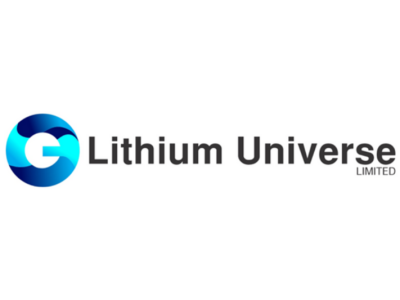
The nickel market has faced challenges over the past few years due to a supply glut and weak demand.
Even though the price of nickel surged in the first quarter of 2024, the higher prices didn’t last, and by the end of the year, any gains the base metal made were erased.
Nickel traded in the US$15,000 to US$15,200 per metric ton range at the start of 2025, but what is in store for the rest of the year, and what trends should investors be watching?
Nickel market oversupply to continue in 2025
The primary conditions holding nickel prices from breaking out have been an oversupply situation as Indonesia continues to produce concentrates at record levels. Meanwhile, the demand side hasn’t seen the growth needed to maintain market balance.
“We believe nickel’s underperformance is likely to continue — at least in the near term — amid weakening demand and a sustained market surplus. A surge in output in Indonesia has dragged nickel lower over recent years, and demand from the stainless steel and electric vehicle batteries sectors continues to disappoint,” Manthey said.
Her statements come as China recently introduced measures that will take effect in 2025. These measures, which involve injecting US$1.4 trillion over the next five years, are meant to help the country’s ailing economy.
However, past measures introduced in 2024, particularly those in September, have yet to significantly affect the country’s housing and manufacturing sectors, which are net demand drivers for stainless steel.
Jason Sappor, senior analyst, metals and mining research with S&P Global Commodity Insights, echoed similar sentiments for nickel’s performance in 2025.
“We expect the market to remain oversupplied in 2025, as Indonesia and China’s primary nickel output expands further,” he said.
Sappor also added that prices expected to remain subdued could lead to further output curtailments across the industry. This would be in addition to cuts already made at various operations around the world, particularly those in Oceania.
However, with prices threatening to fall below US$15,000 at the start of 2025, they may fall low enough to cause significant cuts in Indonesia. This could, in turn, make predictions for the overall nickel market over the next year more challenging.
“The latest news reports that Indonesia’s government is considering making deep cuts to nickel mining quotas to boost prices also highlight that the implementation of restrictions on the country’s nickel output should not be ignored as a risk to forecasts for the market to stay in surplus in 2025,” Sappor said.
For her part, Manthey suggests that cuts to supply in 2024 did little to upset the market surplus, but may have also solidified Indonesia’s dominance over the industry.
“The recent supply curtailments also limit the supply alternatives to the dominance of Indonesia, where the majority of production is backed by Chinese investment. This comes at a time when the US and the EU are looking to reduce their dependence on third countries to access critical raw materials, including nickel,” Manthey said.
Will Trump change the Inflation Reduction Act?
One of the biggest factors that could come into play in 2025 is Donald Trump’s return to the White House.
During his campaign, he made several promises that could lead to a shift in the US’ environmental and energy transition policies. These are likely to include reversing commitments made to the Paris Climate Accords and ending tax credits for electric vehicles.
A significant unknown, however, is how he will approach the Inflation Reduction Act (IRA). The program, which was established under the outgoing Biden administration, was designed to stimulate a move away from fossil fuels while also supporting the procurement of a friendly supply of low-carbon nickel.
One part of the IRA, in particular, has made it challenging for Indonesia to gain a foothold in the US market for its nickel exports. Up until now, EVs must meet foreign entity of concern (FOEC) rules to qualify for the US$7,500 tax credits outlined under the act.
The US considers nations like China, Russia, Iran, and North Korea to be of concern. Under rule 30D of the act, these nations cannot control more than 25 percent of the board seats, voting rights, or equity interests of a company that supplies critical minerals for EV batteries destined for the US.
This has been a major obstacle for Indonesia as it has worked to build a trade partnership, which is part of the critical minerals requirement under the act.
Manthey outlined how Trump may seek to tighten rules, making a trade pact with Indonesia more difficult.
“Indonesia has been trying to reduce China-based ownership of new nickel projects to help its nickel sector qualify for the IRA tax credits. Tighter FEOC rules would create more issues for nickel supply chains and would be an obstacle to Indonesia’s goal of expanding its export market to the US,” she said.
Manthey also outlined that if the rules were tightened, primary and intermediate production would continue to be sent to China.
Investor takeaway
Barring any major shift in the supply and demand environment, the price of nickel is unlikely to have any significant gains over the next year. In turn this won’t make the industry supportive for investors in the short term.
“The surplus in the class 1 market is reflected in the rising exchange stocks. Further inflows of Chinese and Indonesian metal into the exchange’s sheds could put additional downward pressure on the London Metal Exchange’s nickel prices,” Manthey said.
She added that the potential upside would be stronger stainless steel output or a restricted ore supply from Indonesia. However, the downside risk of slower growth in the EV markets or the cancellation of some incentives in the US could offset this.
Overall, Manthey isn’t expecting large price movements.
“We forecast nickel prices to remain under pressure next year as the surplus in the global market continues. We see prices averaging US$15,700 per ton in 2025,” she said.
Securities Disclosure: I, Dean Belder, hold no direct investment interest in any company mentioned in this article.










